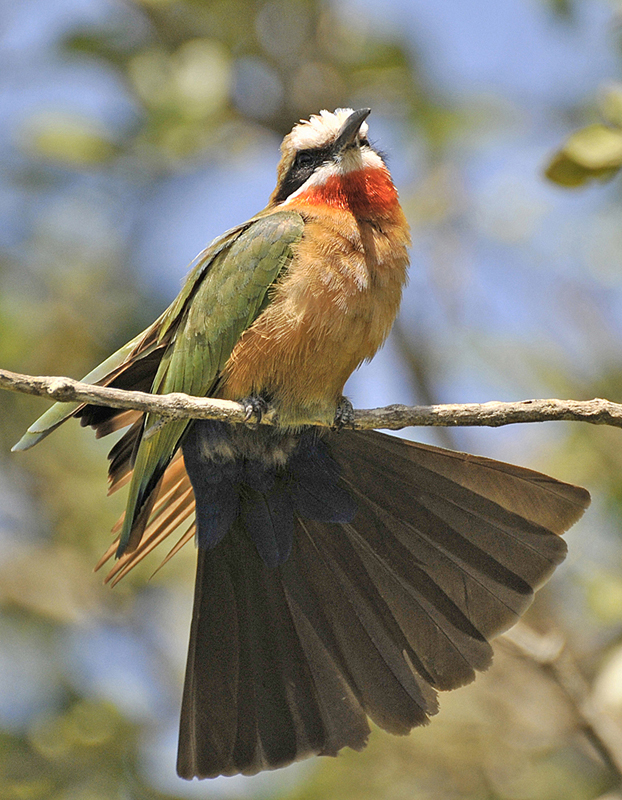Location
Arusha National Park
Tanzania
Metadata
Make Nikon D300
Lens Nikkor AF-S VR 70-300 mm f/4.5-5.6G at 450 mm
Exposure 1/800 s, f/6.3, ISO 320
Image size 519 x 667 pixels
IOC Names
Order Coraciiformes Family Meropidae
Deutsch Wei▀stirnspint Dutch Witkapbijeneter
Italian Gruccione frontebianca Spanish Abejaruco Frentiblanco
Comments
White-fronted bee-eaters have one of the most complex family-based social systems found in birds. Colonies, which average 200 individuals, comprise socially monogamous, extended family groups with overlapping generations, known as "clans", which exhibit cooperative breeding. Males keep close to their mate, but she is likely to be chased by foreign males who may force her to the ground and rape her. Non-breeding individuals become helpers, preferentially to relatives. These helpers may contribute to all aspects of the reproductive attempt and availability of helpers doubles the production of flying youngs. In addition, 7% of all eggs are laid parasitically, often by neighbouring bee-eaters or by honeyguides. The diet is composed only of flying insects, of which honeybees are one half.
Fry CH and Fry K (1999): Kingfishers, Bea-eaters & Rollers, Princeton University Press, Princeton, NJ.
|
| 09/07/2008 |
White-fronted Bee-eater |
Jean-Michel PAULUS
|
